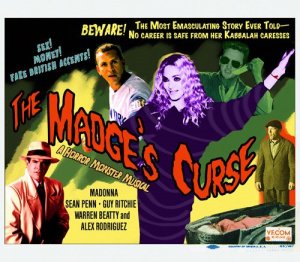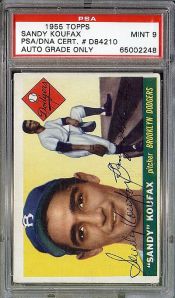
Last Friday a panel including Mr. Burns, Doris Goodwin Kearns and the one Hall-of-famer, Peter Gammons gathered at Harvard's Kennedy School of Government for a discussion on baseball as a narrative tradition. The field boxes and bleachers were both packed to the rafters and the caliber of Q&A from the gallery was top-notch -- hence the memorable comments and conjectures here:
Probably the sharpest focus emerging from a concentrated list of topics came to rest on the relationship between self-absorption and self-delusion. The larger-than-life epic biographies were playing out in over sized cinematic narcissism or as Gammons described as the Story of Alex Rodriguez, starring A-rod, as portrayed by Sir Alex himself. Gammons said that the kind of "frailty" he associated with the role once reserved for Cal Ripkin. But once he witnessed the hyperventalations and the breaking sweats emerge from his steroids confessional with A-Rod, he sought the authentic and credible council of former manager Joe. That combination of self-worship and self-delusion summed up two people Torre had come to know in his career: A-rod and Roger Clemens. The case of Clemens made all the more plausible by Roger's genuine declaration he had broken no laws. That level of deception insured that the ensuing "performance" was the media's -- not his.
Yes it turns out that Clemens' ego is more commanding than even his fastball. Not that he can't snap Piazza's bat like a match stick. But was that the actor or the drama or the 'roids playing to the gallery? Doris delivered a media critique by her former boss LBJ as another showcase of the delusional hall of mirrors around larger-than-life figures. When she called the President on spinning yarns at the expense of accuracy he saw the greater evil in the curse of verbatim evidence: "Those reporters only want to know the pattern of the wallpaper -- not how good the lovemaking was in the room (where this history) happened."
No mention of self-absorption is entirely documented without my own footnoted lapses. They were reinforced by Ken Burns' year marker of 1985 as the last time he had set foot in the Kennedy School of Government to preview his film on the life of Huey Long. That resonated with my recounting to my wife the night before that I respected Burns professionally to the same degree that I personally distaste him leading from a weekend visit to his home in Walpole, NH that same year. I remember the expectant thrill of sharing our common love of an alma mater (Hampshire College), the documentary tradition, and American history -- footnote: my final project at Hampshire was a documentary on the 1939, 1964, and as-yet still conceivable 1989 New York Worlds Fairs. Instead the weekend was about the reason we had received the invitation in the first place.
That would be my first wife Liz Dubelman who shared the additional honor of actually winning professional recognition (a student Emmy) for her own final Hampshire Div. III (senior thesis) before moving onto the crew of 9 1/2 Weeks in the spring of '84. I don't remember much about the visit except that Ken split his own firewood and that he advised Liz (my fiance at the time) to drop me as a hindrance to her fuller potential. Other than love and admiration, I had nothing else to bring to the narrative he'd written for Liz. In retrospect he was probably right. Either way, Liz had the best post-nuptial eulogy: "Not bad for a starter marriage."
The bruised egos of little people elites also crash-landed across Ms. Kearns Goodwin who made almost as many mentions of her hometown (Rockville Centre) as her home team Dodgers. It was those two footnotes that had prompted by lifelong chum's dad to seek out her endorsement for his autobiography -- a tall life tale that included moonlighting as the only weekly review tabloid ever to cover the Mets and Yankees. What made Playball all the more legion in the pantheon of New York sports media is that the labor (and investment) was all love. And the investor labored by day in the rival Newsday sports department. There were few if any other contributors to Paul Ballot's enterprise except a prolific, snot-nosed pre-teen Yankee diehard from Jersey named Keith Olbermann who became the paper's de facto proofreader from his vigilant place in the letters to the editor column. Anyway Doris Kearns Goodwin had never heard of Paul Ballot and Paul never heard back from Doris.
So, leaving the ego crumbles to the clay pigeons...
 The most delicious scoring by my count was Gammons' description of the new CitiField as a "modern Ebbets Field for pitchers." It was prompted by a question about whether the New York Mets (or "Metropolitans" as Ken presented in his fact base) deserved the legacy-bearing mantle for carrying the most historic moment in baseball history 59 years ago today when Jackie Robinson debuted with the Dodgers. Gammons mentioned the Fred Wilpon connection to Sandy Koufax but I don't buy it. Sandy might have been Bar Mitzvahed in his 1955 Topps card but he was lionized out in LA -- not Flatbush. Ex-Dodger diehard Doris mentioned the Mets as the anti-Yankees. But then she went on to say that Met fans hate the Yankees and not the reverse (not true by my count)!
The most delicious scoring by my count was Gammons' description of the new CitiField as a "modern Ebbets Field for pitchers." It was prompted by a question about whether the New York Mets (or "Metropolitans" as Ken presented in his fact base) deserved the legacy-bearing mantle for carrying the most historic moment in baseball history 59 years ago today when Jackie Robinson debuted with the Dodgers. Gammons mentioned the Fred Wilpon connection to Sandy Koufax but I don't buy it. Sandy might have been Bar Mitzvahed in his 1955 Topps card but he was lionized out in LA -- not Flatbush. Ex-Dodger diehard Doris mentioned the Mets as the anti-Yankees. But then she went on to say that Met fans hate the Yankees and not the reverse (not true by my count)! Perhaps the best bridge from the Dodgers to Mets is not the BQE New Calvary Road underpass but Gil Hodges and his no drama stewardship of the '69 miracle. The torch carrier motif was compounded by his own holy week death 37 years ago at the age of 47 -- Holy smokes, Gil.
Ken said that the most frequent criticism he got for his Nine Innings documentary was the omissions of specific players -- not what actually ended up in the final cut. There was a particular fixation with Harmon Killebrew. Who knew? And the final cut now has two extra innings slated for a run next fall on PBS. Could Rod Carew winning a batting title with 0 home runs in 1972 be far behind?
Gammons provided the statistical gem of the session in defense of MLB's reluctance to embrace the salary cap. He posited 20 different teams that had won the World Series in the past 30 years -- compared to less than half in the NFL, 15 in the NBA and a mere 11 in the NHL. He also spent a good deal of microphone time lobbying on behalf of current baseball owners who he believes conveys a baseball ethos that transcends steroids, bond issues for new ballparks and free agency. I'm referring to an otherwise downplayed gesture by Tigers owner Mike Ilitch to underwrite billboards at Comerica Park not only for the "GM fountain" which they cannot afford but to introduce the corporate emblems of Ford and Chrysler: "This would simply never happen in the NFL or NBA."
Another baseball distinction noted by Burns was the uneven media treatment of steroids, ranging from yesterday's buried transactions (NFL) to page one scandal (MLB). It struck me as pollyannish to compare fielding next generation questions about why +700 home runs and +300 career victories would fail to qualify those record-holders for Hall status. What about +4000 hits? That's not even about performance enhancement! Hopefully the historians of 2020 will see Bonds, Clemens, Rose, Sosa, Palmero, McGwire, etal. as matinee anomalies. After all gravity defying web-gems are a routine staple of Baseball Tonight. And any one of them surpasses the legendary grandeur of Mays robbing Wertz or Agee fleecing Blair and Hendricks.
Just the same the venomous addictions of professional athletes don't rank on the same scale of innocense debunkery and true reality series revelations as the stork, Santa or the Peterson Kekick wife swap for that matter. Another regrettable aspect of the modern game that didn't yield the level of consternation or perspective I was hoping for was not the financialization of baseball but the individualization of the game. True, Gammons made a passing and disparaging reference to rotisserie leagues but am I really the only ancient nostalgia buff in befuddlement and misery when they can't find a single pre-season rag on the newsstand that handicaps teams ahead of player and pitcher position ratings?
Finally, someone asked the panel for their favorite fictious baseball depictions. Bull Durham was mentioned as emphatically as Field of Dreams was ignored. Maybe the reverse would have held if the host had been a conservative bastion? Doris put in a plug for Don Delillo's pulse on the game's rhythms. How about that? A non-baseball historian putting in a plug for a non-baseball writer's baseball writings?


No comments:
Post a Comment